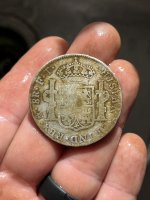- Thread starter
- #61
Thank you and yes I would like to see that article, if it isn't too much trouble for you. I'm guessing that Von Mueller saw something in the medicine wheel that might have aligned with the Auriga constellation or it's brightest star, Capella.impressive work mdog.. reminds me that KVM referenced the NatGeo article on solar & star alignments of Bighorn Medicine Wheel as a LUE clue.
View attachment 2141712
Im having trouble finding the article via Google; NatGeo does a good job of locking content behind their paywall. I know I've got the article PDF on my desktop computer and will look for it and share if you need it.





